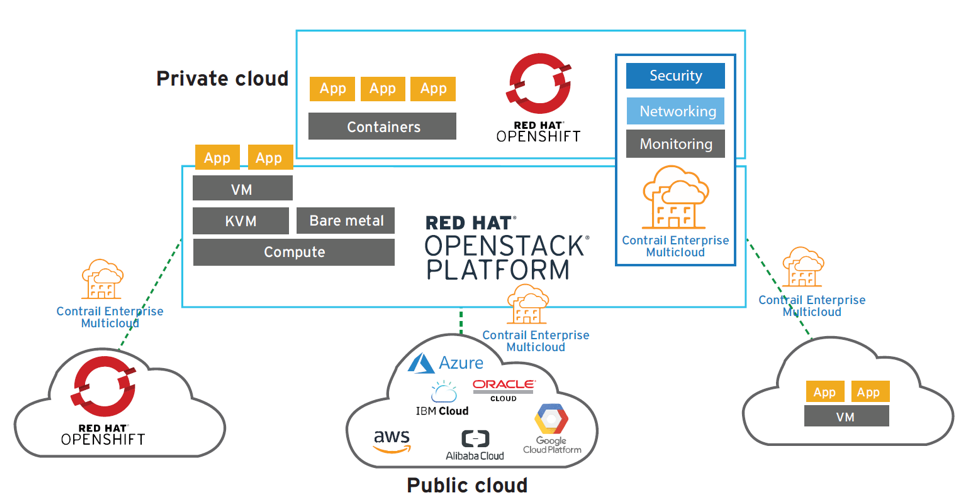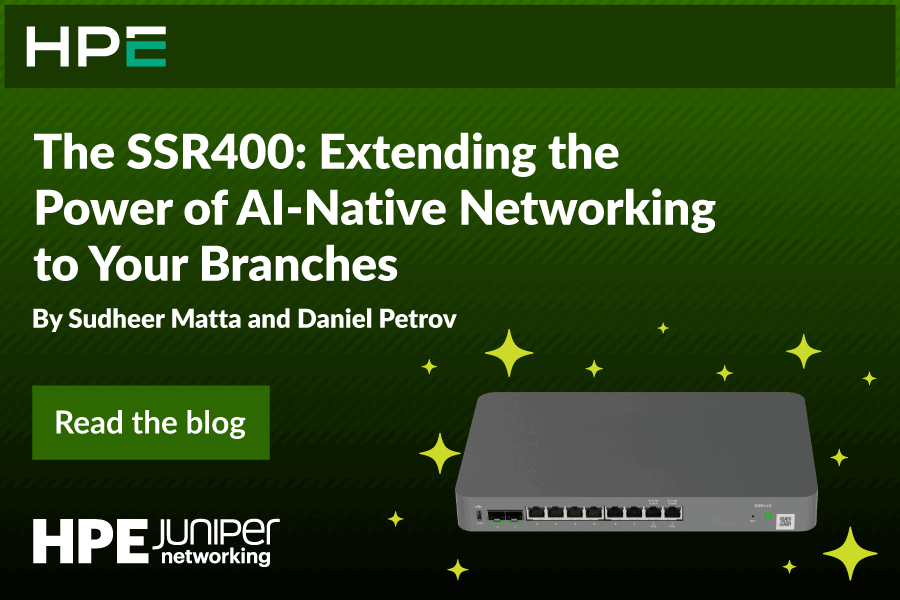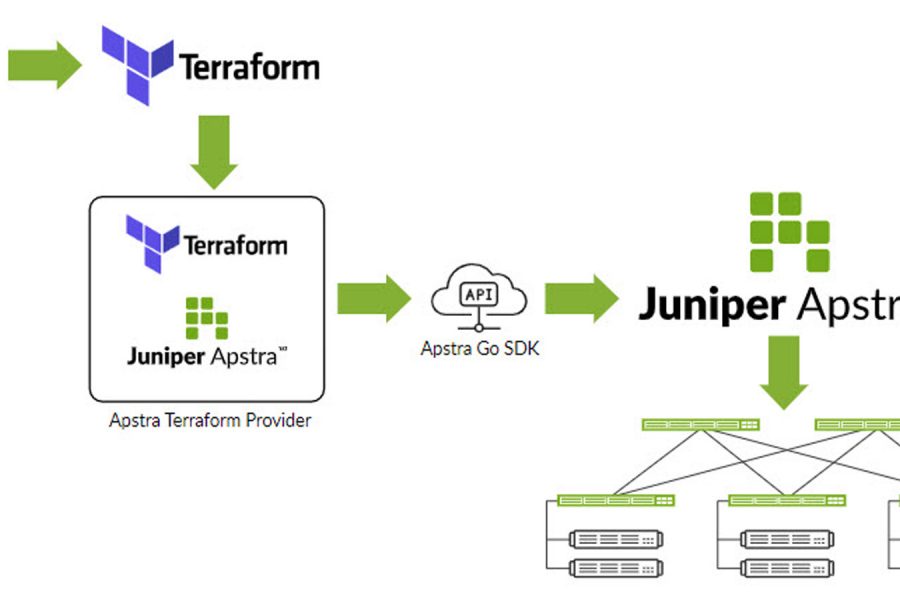Author: Bikash Koley, Chief Technical Officer, Juniper Networks
Co-Author: Ashesh Badani, Vice President and General Manager, Cloud Platforms, Red Hat
The move to hybrid and multicloud environments is more than an exercise in deploying technologies. A switch or a router, or an orchestration or management system. It’s not enough to lift and shift an application from on-prem servers to servers in the cloud. This transition represents something more than swapping one technology for another. It’s a fundamental change in how enterprises approach IT.
And as with any change of this magnitude, success will likely not be determined by the high-level objectives, but rather how well nuances, complexities and ground realities are managed.
Like a cloud
Most transitions in technology take time. With cloud, we are not looking at an evolutionary step in isolation. We have customer successes that provide a glimpse into what the possibilities might hold. Customer challenges to deliver new services faster and to create differentiation through technology are indeed solvable—and at scale. But we believe the key to navigating this change is democratizing cloud-grade operations. Merely replicating technology choices without the accompanying shift in operational skill, discipline and culture will not yield great results.
This is because cloud is more than just technology and also more than just public cloud. Cloud is a new architecture and operational model and hybrid and multicloud architectures can offer customers the greatest flexibility.
Red Hat as an operational change agent
The operational change before us is fundamental. It necessitates agents of change that understand the future, approach innovation in new ways and have the market presence to facilitate the migration to a new way of architecting and operating IT infrastructure.
Red Hat is perhaps one of the best change agents in our industry. Having driven open source to the enterprise, Red Hat has been able to strike at both the technological and cultural barriers to progress, as well as across the technology stack. Whether it’s Linux, Ansible, OpenStack, Kubernetes or other open source technologies, Red Hat has become a standard for bringing open source innovation into the enterprise in ways that are designed to make it more consumable, reliable and secure. Juniper believes in the same principles of open source innovation, open APIs, open standards and software-defined automated infrastructure.
Of course, no single vendor should be able to drive a movement like this, which is why Juniper and Red Hat are working together to lead this transition to the next era in IT.
Diversity and uniformity
Customers can run workloads on bare metal or in VMs or containers, in private clouds or public clouds such as Amazon Web Services (AWS), Google Cloud, IBM Cloud or Microsoft Azure. They can use both proprietary and open source tools to manage workloads, monitor the system, increase security or troubleshoot. The options are seemingly endless.
All of these choices are a good thing, as it gives power back to the customer to adopt the technologies that make the most sense for their organization – to deploy apps in the best environment for their use case or to shift workloads as resource needs change. This is the goal of hybrid and multicloud environments. To enable this diversity of choice, creating a consistent foundation and approach to operational consistency across IT environments is paramount. Operational practices should not have to change in meaningful ways depending on where an application is hosted or for whom a service is deployed. Customers are asking for a simplified operator experience. And, importantly, that simplification should cut across compute, storage and networking.
Juniper and Red Hat
Juniper’s collaboration with Red Hat is an important step in helping to make this simplification a reality. Our Multicloud Enabler solution combines Juniper’s Contrail Enterprise Multicloud with Red Hat OpenShift Container Platform and Red Hat OpenStack Platform. By bringing these products together, we are aiming to simplify the deployment and operation of multicloud infrastructure.
Earlier this year, we announced this initiative. Today, we are pleased to share that the Multicloud Enabler solution powered by Red Hat and Juniper is generally available.

Image: Architecture of Multicloud Enabler Powered by Red Hat and Juniper
Multicloud Enabler powered by Red Hat and Juniper
The Multicloud Enabler solution helps businesses develop and deploy containers for applications and services using Juniper Networks Contrail Enterprise Multicloud, Red Hat OpenStack Platform as the IaaS in private clouds and Red Hat OpenShift Container Platform as the container platform to connect and monitor workloads across private clouds and multiple public clouds with a unified Software-Defined Network (SDN). Multicloud Enabler powered by Red Hat and Juniper is designed to simplify and eliminate deployment and operation complexities while maintaining an open and more secure cloud environment.
Contrail Enterprise Multicloud enables advanced analytics to monitor and analyze the entire
infrastructure, rendering operations simpler and more effective. Contrail Enterprise Multicloud provides comprehensive, real-time visibility into the multicloud environment, along with intent-based analytics that allow for automated, preventative remediation in real-time.
Read the Multicloud Enabler solution brief for more details.
Multicloud is open for business
Ultimately, our efforts are aimed at enabling even more customers to benefit from the agility that hybrid cloud and multicloud environments can provide. But, importantly, we are doing so on a combined platform designed for an open future.
Red Hat has shown that open source could drive enterprise IT. In fact, it’s hard for us to imagine a future that is closed or that limits customer choice and flexibility. This collaboration brings together multiple open source components, offering enterprises more options for their operational decisions.
Who can predict exactly how new technology will emerge? The best that any of us can do is solve today’s problems while creating as many options to take advantage of tomorrow’s innovations. With Red Hat OpenShift Container Platform, Red Hat OpenStack Platform and Contrail Enterprise Multicloud, we are bringing more options to IT, designed to satisfy both the architects responsible for today and the strategists responsible for tomorrow. Where the old refrain used to go something like “Nobody gets fired for buying”, the new mantra is probably more applicable to how quickly companies can latch on to the newest advancements, regardless of where they originate.

























